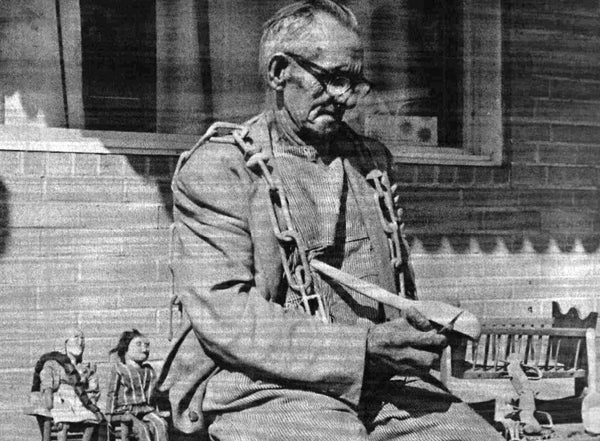Whirligigs in Motion: Exploring the Folk Art Legacy

Folk art has long been a captivating reflection of cultural identity, expressing the creativity and ingenuity of communities throughout history. One particular facet of this rich tradition is the whimsical world of folk art whirligigs. In this article, we'll delve into the origins of both folk art and whirligigs, exploring why these charming creations are not only cherished collectibles but also culturally significant expressions of human imagination.

The History of Folk Art:
Folk art is rooted in the traditions of everyday people rather than trained artists and has a diverse and colorful history. Emerging from different cultures around the world, folk art encompasses a wide range of mediums, from paintings and sculptures to utilitarian objects like pottery and furniture. Characterized by simplicity, authenticity, and a connection to cultural heritage, folk art has been a means for communities to express their stories, beliefs, and everyday life through creative endeavors.
The Evolution of Whirligigs:
The history of whirligigs can be traced back centuries, with their roots deeply embedded in both practical and artistic purposes. Originating as functional wind-driven devices, whirligigs were initially designed to serve utilitarian roles, such as scarecrows in fields or weathervanes on barns. Over time, their utilitarian nature evolved into an art form as craftsmen began embellishing these kinetic sculptures with imaginative and often humorous designs.

Why Collect Whirligigs:
Collecting whirligigs has become a popular hobby for enthusiasts and art lovers alike. These whimsical, kinetic sculptures not only showcase the creativity of folk artists but also offer a unique blend of form and function. Collectors are drawn to the often-improvised craftsmanship, vibrant colors, and the motion of whirligigs, making them standout pieces in any collection. Additionally, the diversity of designs and themes allows collectors to curate a unique assortment that reflects their personal tastes and interests.
Cultural Importance of Whirligigs:
Beyond their aesthetic appeal, whirligigs hold cultural significance as they often depict scenes from everyday life, folklore, or historical events. They serve as visual narratives, preserving stories and traditions in a tangible and engaging way. Furthermore, the lasting popularity of whirligigs demonstrates a shared appreciation for the simple pleasures of life and the universal joy derived from art that comes to life with every gust of wind.
Folk art whirligigs capture the essence of creativity and storytelling that defines folk art traditions. As collectors continue to appreciate and preserve these whimsical creations, the legacy of folk art and the artistry of whirligigs live on. Whether adorning gardens, homes, or museums, these unique sculptures serve as a testament to the enduring charm of folk art and the captivating magic of motion.







